HYBRID EVENT: You can participate in person at Barcelona, Spain from your home or work.
Hansens Disease
Hansens Disease
Hansens disease primarily affects the skin, nerves, and mucous membranes, leading to characteristic skin lesions and nerve damage. Hansen's disease has a long incubation period, often taking years or even decades for symptoms to manifest, which complicates early diagnosis and treatment. Despite being curable with multidrug therapy, social stigma and misconceptions surrounding the disease persist, leading to discrimination and marginalization of affected individuals. Efforts to eliminate Hansen's disease as a public health threat continue, focusing on early detection, prompt treatment, and destigmatization to ensure affected individuals receive the care and support they need.
Committee Members

Francis J Castellino
University of Notre Dame, United States
Ranjan Ramasamy
ID-FISH Technology, United States
Saurabh Chattopadhyay
University of Kentucky College of Medicine, United States Infection 2026 Speakers

Rico Leonardo Lizbinski
Northern Light Health, United States
Sasha Leibholz
New York Presbyterian Columbia/Cornell, United States
Lauren Gruffi
New York Presbyterian Columbia/Cornell, United States



Title : Pathogen-derived noncanonical epitopes: Are they valuable targets for novel vaccinations and shall we be concerned about autoimmune responses?
Michele Mishto, Francis Crick Institute, United Kingdom
Title : Bioterrorism through the ages: Historical perspective, emerging threats, and medical countermeasures
Claudia Ferreira, Sorbonne University, France
Title : Changing population immunity to COVID-19 in the context of infection, vaccination, and emerging SARS-CoV-2 variants
Ranjan Ramasamy, ID-FISH Technology, United States
Title : Extensively drug-resistant bacterial infections: Confronting a global crisis with urgent solutions in prevention, surveillance, and treatment
Yazdan Mirzanejad, University of British Columbia, Canada
Title : Measles vaccination coverage indicators in 2023 and advance towards measles elimination and eradication by 2030
Pedro Plans Rubio, College of Physicians of Barcelona, Spain
Title : Severe influenza and other related respiratory infection cases during Omicron era in Japan
Masafumi Seki, Saitama Medical University International Medical Center, Japan